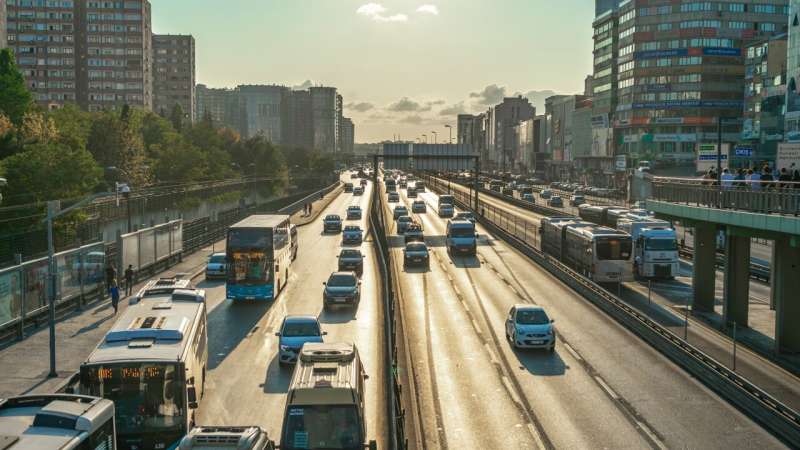States would set lower highway emissions goals under proposed rule

The Federal Highway Administration on Thursday proposed a rule to require states and municipalities to set targets to reduce greenhouse gas emissions as the federal government aims to provide billions of dollars to reduce transportation sector emissions.
The rule would require state departments of transportation and metropolitan planning organizations to establish declining carbon dioxide emissions targets from transportation sources and establish a method for measuring and reporting the emissions to the FHWA.
It would not mandate specific targets, giving states and municipalities "flexibility to set targets that are appropriate for their communities and that work for their respective climate change and other policy priorities." States would be required to establish two- and four-year targets and report on the progress biennially.
The FHWA said that move would help the federal government meet climate goals, including reaching net-zero greenhouse gas emissions by no later than 2050.
"Our approach gives states the flexibility they need to set their own emission reduction targets, while providing them with resources from President Biden's Bipartisan Infrastructure Law to meet those targets and protect their communities," Transportation Secretary Pete Buttigieg said in a news release.
The law signed last November included more than $27 billion to help states and municipalities meet their emissions reduction targets. This includes $6.4 billion for the Carbon Reduction Program, which would provide funding to help states and municipalities develop strategies and fund projects to reduce emissions from on-highway sources.
The Transportation Department also highlighted other programs, including $5 billion to build out a national electric vehicle charging network, $7.2 billion for pedestrian and bicycle infrastructure and $250 million to reduce congestion in metropolitan areas.
Currently, 24 states and the District of Columbia have already set greenhouse gas reduction targets under state law. Deputy Federal Highway Administrator Stephanie Pollack said the rule intends to "bring this locally proven approach to scale nationwide."
According to EPA data, the transportation sector was the largest source of greenhouse gas emissions in 2020, mostly from light-duty vehicles. The EPA is currently developing more stringent vehicle emissions standards through model year 2030, with a proposal due in March and a final rule expected a year later.
Evergreen Action, a climate advocacy group, applauded the announcement and said the climate funds distributed through the infrastructure law "can and must be allocated to support ambitious emission reduction strategies."
"This kind of rulemaking, paired with investments from Congress to support state climate leadership, is exactly what we should be seeing from an administration that promised whole-of-government action on climate," said Lena Moffitt, the group's chief of staff.
2022 CQ-Roll Call, Inc., All Rights Reserved.
Distributed by Tribune Content Agency, LLC.





















